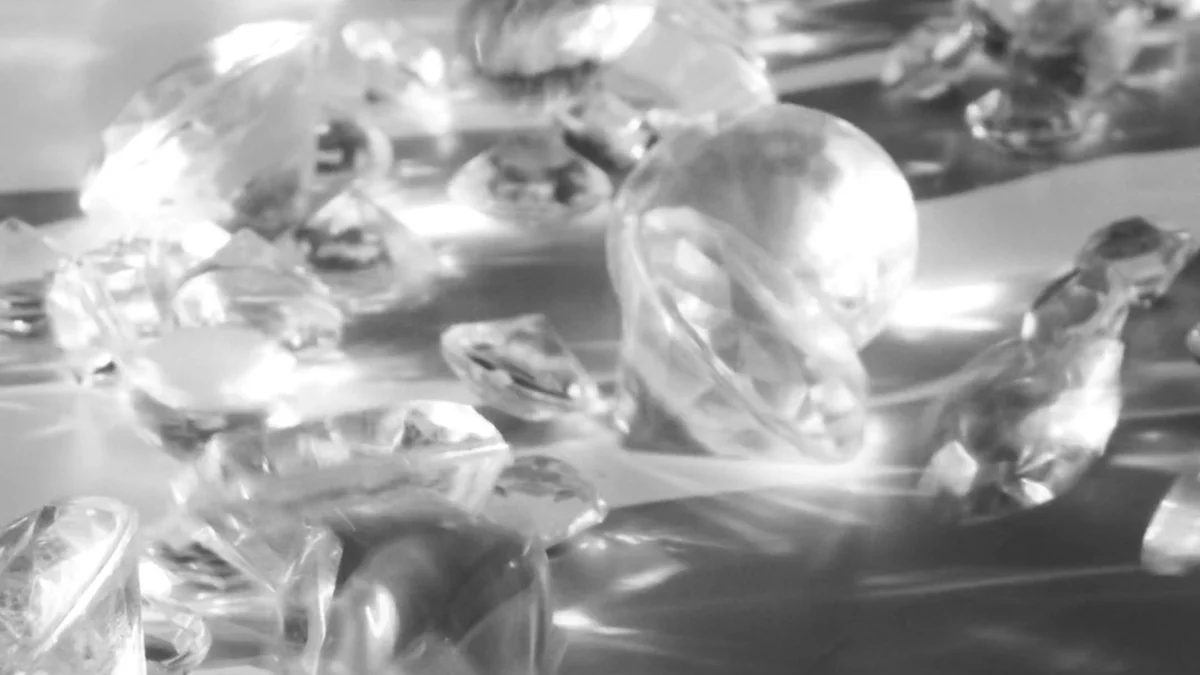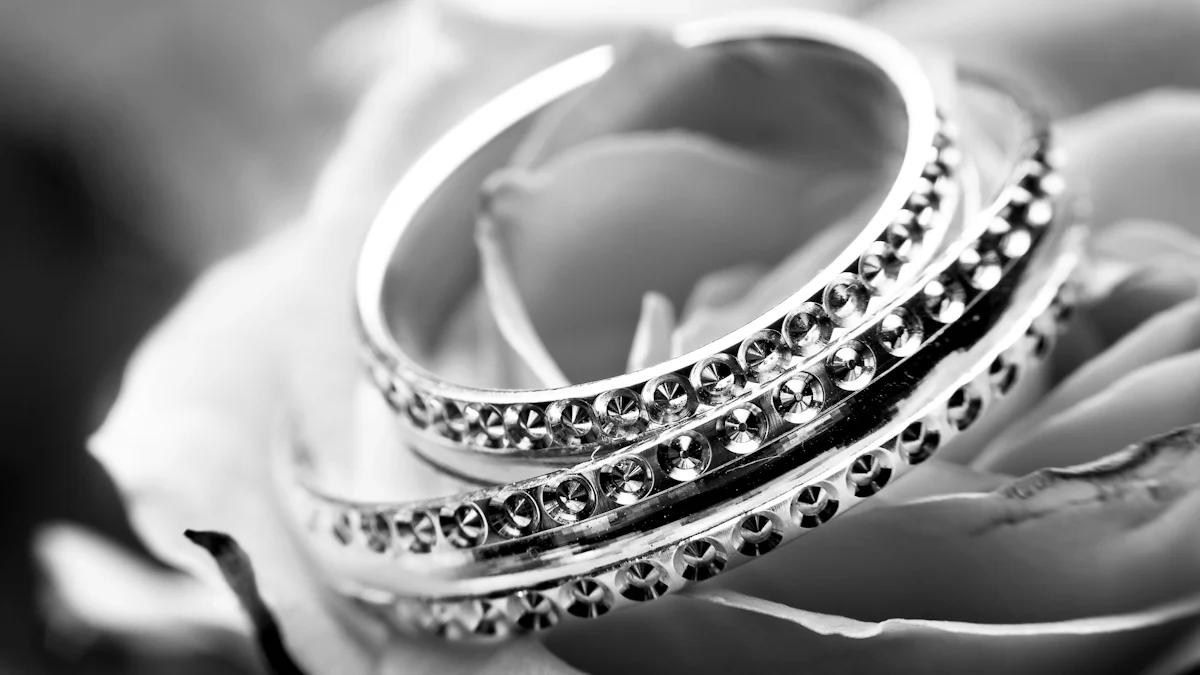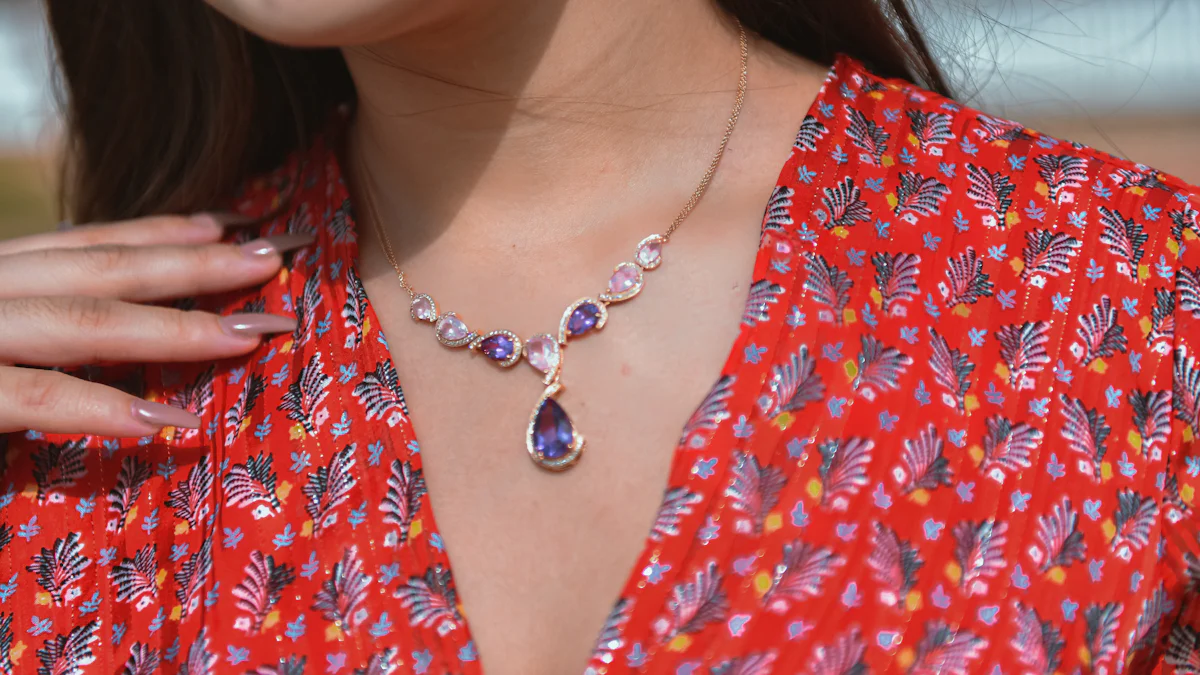VVS Diamonds vs VS Diamonds Key Differences

When it comes to diamond clarity, VVS diamonds stand out for their exceptional quality. These diamonds contain tiny inclusions that are nearly impossible to detect, even under magnification. In contrast, VS diamonds have slightly larger inclusions, though they often remain invisible to the naked eye. The rarity of VVS diamonds makes them highly desirable and significantly more expensive. If you value clarity and long-term investment potential, VVS diamonds offer unmatched brilliance and prestige. However, your choice should align with your budget and how much clarity matters to you.
Key Takeaways
- VVS diamonds offer exceptional clarity with inclusions that are nearly impossible to detect, making them ideal for those who prioritize purity and brilliance.
- VS diamonds provide a balance between clarity and affordability, featuring inclusions that are often invisible to the naked eye, making them a practical choice for budget-conscious buyers.
- When choosing between VVS and VS diamonds, consider your budget and how much clarity matters to you, as VVS diamonds are significantly more expensive due to their rarity.
- Always opt for certified diamonds from reputable organizations like GIA or AGS to ensure quality and avoid misrepresentation in clarity grades.
- For everyday wear or larger carat sizes, VS diamonds can be a smart compromise, allowing you to invest in other qualities like cut or carat weight without sacrificing beauty.
- VVS diamonds are perfect for heirloom pieces or significant investments, while VS diamonds are ideal for those who want stunning jewelry without exceeding their budget.
Understanding VVS and VS Clarity Grades
When selecting a diamond, clarity plays a crucial role in determining its overall quality and value. Both VVS and VS clarity grades offer unique characteristics that cater to different preferences and budgets. Let’s explore what sets these two clarity grades apart.
What Are VVS Diamonds?
Definition and Characteristics of VVS Clarity Grade
VVS diamonds, short for Very, Very Slightly Included, rank among the highest clarity grades on the diamond clarity scale. These diamonds contain inclusions so minute that even under 10x magnification, they are challenging to detect. To the naked eye, VVS diamonds appear flawless, making them a top choice for those who prioritize purity and brilliance.
The exceptional clarity of VVS diamonds enhances their sparkle and light performance. Their near-flawless appearance makes them highly desirable for engagement rings and fine jewelry. If you value a diamond with minimal imperfections, VVS diamonds provide an excellent option.
Sub-grades: VVS1 vs VVS2
VVS diamonds are further divided into two sub-grades: VVS1 and VVS2. The distinction lies in the size and location of inclusions:
- VVS1 diamonds have fewer and smaller inclusions compared to VVS2. These inclusions are typically located near the edges, making them nearly impossible to spot, even under magnification.
- VVS2 diamonds, while still of exceptional clarity, may have slightly more noticeable inclusions under magnification. However, these inclusions remain invisible to the naked eye.
Both sub-grades maintain the high standards of the VVS clarity grade, but VVS1 diamonds are often considered more desirable due to their superior purity.
What Are VS Diamonds?
Definition and Characteristics of VS Clarity Grade
VS diamonds, or Very Slightly Included diamonds, offer a balance between clarity and affordability. These diamonds contain inclusions that are slightly larger or more numerous than those in VVS diamonds. However, most VS diamonds still appear eye-clean, meaning their inclusions are not visible without magnification.
VS diamonds provide excellent light performance and brilliance, making them a popular choice for buyers seeking high-quality diamonds at a more accessible price point. Their clarity grade ensures that they maintain a beautiful appearance while offering better value compared to higher clarity grades.
Sub-grades: VS1 vs VS2
Like VVS diamonds, VS diamonds are categorized into two sub-grades: VS1 and VS2. The difference lies in the visibility and location of inclusions:
- VS1 diamonds have fewer and less noticeable inclusions compared to VS2. These inclusions are often small and located in less prominent areas of the diamond.
- VS2 diamonds may have inclusions that are slightly easier to detect under magnification. However, they still maintain an eye-clean appearance in most cases.
Both VS1 and VS2 diamonds offer excellent clarity for their price, making them a practical choice for buyers who want a stunning diamond without exceeding their budget.
Visual Differences Between VVS and VS Diamonds

Inclusion Size and Visibility
How inclusions differ between VVS and VS diamonds
The primary distinction between VVS diamonds and VS diamonds lies in the size and visibility of their inclusions. VVS diamonds, which stand for Very, Very Slightly Included, have inclusions so small that they are nearly impossible to detect, even under 10x magnification. These inclusions are often microscopic and located in less noticeable areas of the diamond. In contrast, VS diamonds, or Very Slightly Included diamonds, contain inclusions that are slightly larger and more numerous. While these inclusions are still small, they are easier to identify under magnification compared to those in VVS diamonds.
The clarity of VVS diamonds makes them a preferred choice for buyers seeking near-flawless stones. On the other hand, VS diamonds offer a balance between clarity and affordability, making them a practical option for those who prioritize value without compromising beauty.
Can the differences be seen with the naked eye?
To the naked eye, the differences between VVS and VS diamonds are often negligible. Both clarity grades typically appear "eye-clean," meaning their inclusions are not visible without magnification. However, under close inspection or with the help of a jeweler's loupe, you may notice that VVS diamonds exhibit fewer and smaller imperfections compared to VS diamonds.
For most buyers, the visual difference between these two clarity grades is minimal in everyday settings. The choice ultimately depends on whether you value the higher clarity of VVS diamonds or prefer the cost savings associated with VS diamonds.
Impact on Diamond Appearance
How clarity affects brilliance and sparkle
Clarity plays a significant role in determining a diamond's brilliance and sparkle. Fewer inclusions allow light to pass through the diamond more freely, enhancing its overall radiance. VVS diamonds, with their minimal inclusions, excel in this aspect. Their superior clarity ensures maximum light performance, resulting in exceptional brilliance and fire.
VS diamonds, while slightly less clear, still maintain excellent sparkle. The inclusions in VS diamonds are usually small enough that they do not significantly obstruct light reflection. This makes VS diamonds a great choice for those who want a dazzling stone without paying a premium for higher clarity.
Situations where clarity differences are noticeable
The clarity differences between VVS and VS diamonds become noticeable in specific situations. For instance:
- Under magnification: Jewelers or gemologists can easily identify the inclusions in VS diamonds when viewed under a microscope or loupe. VVS diamonds, however, remain nearly flawless even under such scrutiny.
- In larger carat sizes: Larger diamonds tend to magnify inclusions, making clarity differences more apparent. In such cases, the superior clarity of VVS diamonds becomes more evident.
- For heirloom or investment pieces: If you plan to purchase a diamond as an investment or family heirloom, the higher clarity of VVS diamonds may hold greater appeal due to their rarity and prestige.
In most everyday scenarios, though, the clarity differences between VVS and VS diamonds are subtle and unlikely to impact your enjoyment of the diamond's beauty.
Price Differences and Affordability

Why VVS Diamonds Are More Expensive
Rarity and demand for higher clarity grades
VVS diamonds command higher prices due to their exceptional clarity and rarity. These diamonds fall into one of the highest clarity grades, making them highly sought after by buyers who value near-flawless stones. The scarcity of inclusions in VVS diamonds enhances their brilliance and appeal, driving up their demand in the market.
The rarity of VVS1 diamonds, in particular, makes them even more expensive than VVS2 diamonds. VVS1 diamonds have fewer and smaller inclusions, which increases their desirability. This distinction contributes to a price difference of approximately 10% to 25% between VVS1 and VVS2 diamonds. Buyers seeking the purest clarity often gravitate toward VVS1 diamonds, despite their higher cost.
Price comparison between VVS1, VVS2, VS1, and VS2
When comparing VVS diamonds to VS diamonds, the price gap becomes evident. On average, VVS diamonds cost 10% to 20% more than VS diamonds of similar quality. For example, a VVS1 diamond may be priced significantly higher than a VS1 diamond due to its superior clarity grade. Similarly, VVS2 diamonds, while slightly less expensive than VVS1, still outprice VS1 and VS2 diamonds by a noticeable margin.
The price differences within the VVS2 grade also vary based on factors like cut precision, types of inclusions, and vendor markup. For instance, VVS2 diamonds can range from $11,620 to $12,620 depending on these variables. This variation highlights the importance of considering all aspects of a diamond's quality when evaluating its price.
Are VS Diamonds a Better Value?
Balancing clarity and cost
VS diamonds offer an excellent balance between clarity and affordability. While they contain slightly larger inclusions than VVS diamonds, these inclusions are often invisible to the naked eye. This makes VS diamonds a practical choice for buyers who want a beautiful diamond without exceeding their budget.
In terms of pricing, VS1 diamonds are typically 10% to 30% less expensive than comparable VVS diamonds. This price difference allows you to allocate more of your budget toward other diamond qualities, such as cut or carat weight, without sacrificing the overall appearance of the stone. For many buyers, this trade-off between clarity and cost represents the best value.
When VS diamonds offer the best compromise
VS diamonds shine as the ideal choice in several scenarios. If you prioritize affordability but still want a diamond that appears eye-clean, VS diamonds deliver exceptional value. They are particularly suitable for everyday wear, where minor inclusions are unlikely to affect the diamond's beauty or durability.
For those purchasing larger diamonds, VS diamonds can also provide a cost-effective solution. While inclusions may become more noticeable in larger stones, the savings on clarity can allow you to invest in a higher carat weight or a better cut. This flexibility makes VS diamonds a smart compromise for buyers seeking a balance between quality and price.
Buying Considerations for VVS and VS Diamonds
Certification and Quality Assurance
Importance of GIA or AGS Certification
When purchasing a diamond, certification is essential. A grading report from reputable organizations like the Gemological Institute of America (GIA) or the American Gem Society (AGS) ensures the diamond's quality and authenticity. These certifications provide detailed information about the diamond's clarity, cut, color, and carat weight. They also verify that the clarity grade, whether VVS or VS, has been accurately determined.
"Always purchase diamonds that are certified by reputable organizations like GIA or AGS. A certification proves that the clarity grade of the diamond is accurately determined and gives you some peace of mind while ensuring transparency in your purchase."
By choosing a certified diamond, you protect yourself from misrepresentation and gain confidence in your investment. Certification also helps you compare diamonds more effectively, ensuring you get the best value for your money.
Avoiding Misrepresentation in Clarity Grades
Misrepresentation can occur when sellers exaggerate a diamond's clarity grade. Without proper certification, you risk overpaying for a diamond that does not meet the advertised quality. To avoid this, always request a grading report from a trusted gemological laboratory.
Reputable sellers prioritize transparency and provide documentation to back their claims. By verifying the clarity grade through certification, you ensure the diamond meets your expectations and aligns with its price.
Personal Preferences and Use Cases
When to Choose VVS Diamonds
VVS diamonds are ideal for buyers who value exceptional clarity and rarity. Their near-flawless appearance makes them perfect for heirloom pieces or investment purposes. If you want a diamond that exudes prestige and brilliance, VVS diamonds stand out as an excellent choice.
These diamonds also suit individuals who prioritize long-term value. Their high clarity grade ensures they retain their appeal over time, making them a meaningful addition to your collection.
When to Choose VS Diamonds
VS diamonds offer a practical option for those seeking beauty without exceeding their budget. Their inclusions are typically invisible to the naked eye, making them suitable for everyday wear. If you want a stunning diamond that balances quality and affordability, VS diamonds deliver excellent value.
For buyers who prioritize other factors like carat size or cut, VS diamonds allow you to allocate more of your budget to these aspects. They are a smart choice for engagement rings or jewelry meant for frequent use.
Other Factors to Consider
The Role of Cut, Color, and Carat in Overall Diamond Quality
While clarity is important, other factors like cut, color, and carat weight significantly impact a diamond's overall quality. The cut determines how well the diamond reflects light, influencing its brilliance and sparkle. A well-cut diamond can enhance the appearance of both VVS and VS diamonds.
Color also plays a role in a diamond's visual appeal. Choosing a near-colorless diamond ensures it complements its clarity grade. Carat weight affects the diamond's size and presence, making it a key consideration for many buyers.
How Clarity Fits into the 4Cs of Diamond Buying
Clarity is one of the 4Cs, alongside cut, color, and carat weight. While it contributes to a diamond's value, it should not be considered in isolation. A balanced approach ensures you select a diamond that meets your preferences and budget.
For example, a VS diamond with an excellent cut and near-colorless grade may appear more brilliant than a VVS diamond with a lower cut grade. Understanding how clarity interacts with the other 4Cs helps you make an informed decision.
Benefits of Each Clarity Grade
Advantages of VVS Diamonds
Exceptional clarity and rarity
VVS diamonds stand out for their exceptional clarity. Their inclusions are so minute that even under magnification, they are difficult to detect. This level of purity enhances their brilliance and sparkle, making them a top-tier choice for those who value perfection. The rarity of VVS diamonds adds to their appeal. These diamonds represent a small percentage of all diamonds available, which makes them highly sought after by collectors and investors. If you want a diamond that exudes exclusivity and flawlessness, VVS diamonds deliver unmatched quality.
Higher perceived value and prestige
Owning a VVS diamond elevates your jewelry collection. These diamonds symbolize luxury and sophistication, often associated with high-status individuals. Their near-flawless clarity grade gives them a higher perceived value, making them a preferred choice for heirloom pieces or significant milestones. When you choose a VVS diamond, you invest in a gemstone that not only holds its value but also reflects prestige and refinement. This makes it an excellent option for those who want their diamond to make a lasting impression.
Advantages of VS Diamonds
More affordable without sacrificing beauty
VS diamonds offer an excellent balance between quality and cost. While they contain slightly larger inclusions than VVS diamonds, these inclusions remain invisible to the naked eye in most cases. This means you can enjoy a diamond that looks stunning without paying the premium price of higher clarity grades. For buyers on a budget, VS diamonds provide a practical way to own a beautiful gemstone without compromising on appearance. Their affordability allows you to allocate more resources to other aspects of the diamond, such as carat size or cut.
Ideal for buyers prioritizing other diamond qualities
If you value factors like carat weight, cut, or color over clarity, VS diamonds are an ideal choice. Their inclusions are minimal enough that they do not detract from the diamond's overall brilliance. This makes them suitable for engagement rings or everyday jewelry where durability and beauty matter most. By choosing a VS diamond, you can focus on enhancing other qualities of the diamond while still enjoying a visually appealing stone. This flexibility makes VS diamonds a smart option for buyers who want to maximize their investment across multiple attributes.
VVS diamonds stand out for their exceptional clarity and rarity, making them a top choice for those seeking brilliance and long-term value. Their near-flawless appearance enhances their desirability, especially for investment or heirloom pieces. On the other hand, VS diamonds provide an excellent balance of clarity and affordability. They deliver beauty without exceeding your budget, making them ideal for everyday wear or larger carat sizes. When choosing between these options, consider your budget, personal preferences, and how much clarity matters to you. Always prioritize certified diamonds and evaluate all 4Cs for a high-quality purchase.
See Also
Evaluating Diamond Rings With Gold Bands From Leading Brands
A Detailed Comparison Of Tungsten And Classic Diamond Rings
Exploring Important Elements That Influence Diamond Ring Costs

